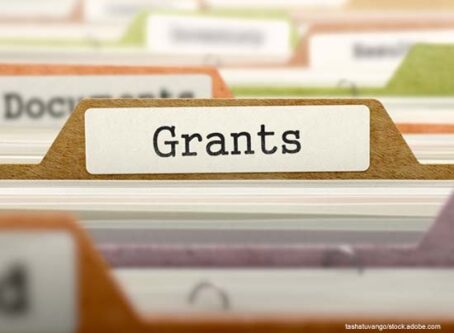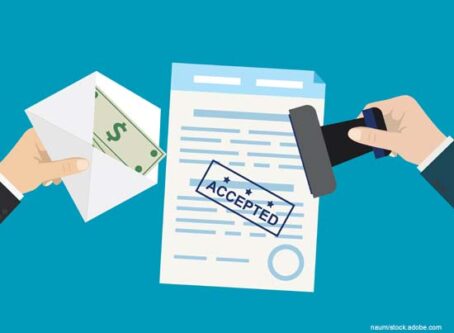Maryland board approves private partner agreement for I-270/495 tolls
The Capital Beltway toll project in Maryland continues to move forward after the state’s Board of Public Works approved of an agreement with a private partner.
On Aug. 11, Maryland’s Board of Public Works held a regular meeting to approve numerous actions throughout the state. Among the items discussed was an award for the predevelopment work for Phase 1 of the Capital Beltway toll project. With a 2-1 vote, the board approved of the agreement with Accelerate Maryland Partners. Gov. Larry Hogan and Comptroller Peter Franchot voted to approve. Maryland Treasurer Nancy Kopp was the lone vote against.
“Through a public-private partnership, (the project) will deliver a new American Legion Bridge, real traffic relief on the Capital Beltway, more transit services for the region, thousands of jobs and long-term economic growth and environmental benefits,” Hogan said. “This traffic relief programs is a win for families, commuters and small businesses. It will finally begin to solve the soul-crushing, worst-in-the-nation traffic that people have failed to address for 50 years.”
Before submitting her vote against the agreement, Treasurer Kopp pointed out that efforts were made by the treasury to dig deeper into the financial impacts of the Capital Beltway toll project.
In a report, it found it necessary to bring in the state’s bond council and financial council to look further into the proposal. Kopp requested $100,000 to execute that analysis. However, that request was denied. Consequently, Kopp said questions are left unanswered, including the ultimate cost of using a public-private partnership agreement rather than using more traditional methods.
She also brought up the recent Intergovernmental Panel on Climate Change report, which highlights a dire need to address the climate crisis. Kopp suggested that the climate has to be a major component when making transportation decisions.
Wednesday’s vote comes less than a month after the National Capital Region Transportation Planning Board reversed a decision made in June to eliminate the Capital Beltway toll project from the air conformity analysis within its long-term plan. That move jeopardized funding for the project.
Shortly after the planning board vote in June, the Maryland Department of Transportation urged the board to hold a revote. The department threatened to remove $1.2 billion worth of projects in order to pay for the toll project, which is the amount it would lose from private sector investment without the air conformity analysis, MDOT claimed.
The agreement with Accelerate Maryland Partners is not a construction contract. Rather, it is a predevelopment contract, which allows MDOT and stakeholders to collaborate with the private sector before defining final dates of the Capital Beltway toll project. It includes preliminary design and preconstruction activities. Approval will allow MDOT to provide more details about the project at the next Board of Public Works presentation.
Capital Beltway toll project met with mixed feelings
Dozens of citizens, government officials and representatives of a variety of groups submitted public comments during the four-hour Board of Public Works meeting. Comments were similar to those made during the July planning board meeting. Many of those who spoke are familiar faces, having spoken out publicly at previous meetings.
County Executive Marc Elrich, Rockville Mayor Bridget Donnell-Newton, and state Sen. Cheryl Kagan all spoke out against approving the public-private partnership agreement. Kagan pointed out that the traffic “horror stories” expressed during Hogan’s and MDOT Secretary Gregory Slater’s presentation were not reflective of her commute to the meeting. She said she was driving 60 mph on the entire stretch of I-270 of her trip. Kagan also presented five reasons why she is concerned about the Capital Beltway toll project:
- Exorbitant tolls; constituents cannot afford a $40 or $50 toll just because they are in a bit of a hurry.
- Environmental impact analysis is not complete.
- The last-minute $60 million add-on for transit was nothing more than to persuade the planning board to support the Capital Beltway toll project, with no specific plans for the money.
- Not enough discussion about telework resulting from the pandemic and how much it will affect traffic in the long term.
- Potential opportunity for federal funding instead of a P3 with a federal infrastructure bill on the horizon.
Rockville Mayor Donnell-Newton also called for the board to not approve of the agreement.
“As a survivor of the (Transportation Planning Board) vote last month, I weep at the way the conversation has been distorted,” Donnell-Newton said. “Traffic congestion at the northern part of I-270 is a problem, and that’s a fact. However, this is about more than traffic congestion. This is about the role of government and the future of our world as we know it.”
Donnell-Newton pointed out that Hogan himself has publicly stated that tolls are regressive.
Much like the July planning board meeting, voices in support of the agreement came mostly from stakeholders who benefit from the Capital Beltway toll project. Representatives of Gaithersburg-Germantown Chamber of Commerce, Suburban Maryland Transportation Alliance, Northern Virginia Association of Realtors, Maryland Transportation Builders and Materials Association, and American Council of Engineering Companies all spoke in support of the agreement.
Moving forward with Capital Beltway tolls
With the approval of the predevelopment agreement, the state is maintaining momentum to keep the project alive and moving.
During Wednesday’s meeting, Secretary Slater said that Interstates 270 and 495 have the highest daily traffic in the state. According to Slater, traffic in the state is exceeding pre-pandemic levels in some areas.
Original Capital Beltway toll plans from four years ago included four express toll lanes on all of I-270 and I-495. However, the current plan includes 37 miles of two high-occupancy toll lanes in each direction. Slater claims that express lanes in Virginia have reduced delays with a 20% traffic deduction on general purpose lanes. Maryland has seen similar results on Interstate 95 near Baltimore.
The final environmental impact statement is not expected until at least next spring. MDOT is expected to deliver the first section of Phase 1 of the Capital Beltway toll project next fall. Beyond that, the state has no schedule, which the predevelopment agreement will establish.
For more information about the Capital Beltway public-private partnership program, go to 495-270-P3.com. LL









